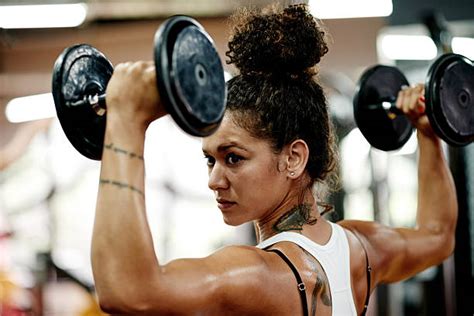Strength training is essential for maintaining mobility, strength, and overall well-being in seniors. As we age, preserving muscle mass and bone density becomes increasingly important, especially in the lower body, where strength is crucial for balance and stability. Incorporating dumbbell exercises into a senior fitness routine can help enhance leg strength, improve mobility, and prevent falls. In this guide, we will explore safe and effective dumbbell leg workouts specifically designed for seniors, focusing on building strength while minimizing the risk of injury. By following these exercises, seniors can maintain independence and improve their overall quality of life.
Join ujocis.net as we delve deeper into this topic.
1. Introduction to Strength Training Benefits for Seniors
Strength training offers numerous benefits for seniors, making it a vital component of a healthy aging process. As people age, they naturally experience muscle loss, reduced bone density, and a decline in balance, all of which can increase the risk of falls and fractures. Regular strength training helps combat these effects by preserving muscle mass, improving bone health, and enhancing stability. It also boosts metabolism, making it easier to maintain a healthy weight and manage blood sugar levels, reducing the risk of chronic conditions like diabetes.
For seniors, strength training can be particularly beneficial for maintaining independence. By improving functional strength, everyday activities such as walking, climbing stairs, and standing from a seated position become easier and less strenuous. This type of training is also known to improve joint flexibility, reduce arthritis symptoms, and promote better posture.
Moreover, strength training can enhance mental well-being, improving mood, and reducing the risk of depression. With exercises tailored to their specific needs, seniors can experience both physical and emotional improvements. Using dumbbells for strength training allows seniors to safely engage in lower body workouts, targeting key muscles to promote a better quality of life as they age.

2. Importance of Lower Body Exercises in Elderly Fitness
Lower body exercises play a crucial role in elderly fitness, as they directly impact mobility, balance, and overall strength. As people age, the muscles in the legs and hips naturally weaken, which can lead to difficulties with walking, standing, and maintaining stability. Strengthening the lower body helps prevent falls, a common risk for seniors, by improving coordination and muscle control.
In addition to reducing fall risk, lower body exercises enhance everyday functional movements like climbing stairs, sitting, and getting out of bed. Maintaining strength in the legs and hips allows seniors to retain independence in daily activities, improving their quality of life.
Lower body workouts also stimulate bone density, especially in areas prone to age-related bone loss like the hips and thighs. This is essential for preventing osteoporosis and related fractures. Dumbbell exercises for the legs can specifically target and strengthen these muscles, ensuring that seniors remain active and mobile. Regular lower body strength training is key to promoting long-term health and well-being in older adults.

3. Safety Tips for Seniors Performing Dumbbell Leg Workouts
When seniors engage in dumbbell leg workouts, safety should always be a top priority to prevent injury and ensure effective results. Before starting any exercise routine, it’s important for seniors to consult with a healthcare provider or fitness professional to confirm that the exercises are appropriate for their physical condition.
One of the key safety tips is to begin with light weights. Seniors should choose dumbbells that allow them to perform the exercises with proper form without straining. Gradually increasing the weight over time can help build strength without causing undue stress on the muscles or joints.
Warm-up exercises are essential before starting any dumbbell workout. A gentle warm-up, such as walking or light stretching, can help prepare the muscles and reduce the risk of injury.
Maintaining proper form is crucial. Seniors should focus on keeping their back straight, knees aligned, and movements controlled throughout each exercise. If balance is a concern, having a stable surface nearby, such as a chair or wall, can provide additional support.
Finally, it’s important to avoid overexertion. Seniors should listen to their bodies and rest between sets to prevent fatigue. Staying hydrated and allowing time for recovery are key aspects of a safe and sustainable dumbbell leg workout routine for seniors.

4. Dumbbell Squats: Technique and Variations
Dumbbell squats are an excellent exercise for strengthening the lower body, particularly targeting the thighs, glutes, and hips. To perform a basic dumbbell squat, start by standing with feet shoulder-width apart, holding a dumbbell in each hand at your sides. Slowly lower your body by bending your knees and pushing your hips back, as if sitting in a chair. Keep your chest upright and ensure your knees stay aligned with your toes. Once your thighs are parallel to the ground, press through your heels to return to a standing position.
There are variations to this exercise that can increase or decrease the intensity. For example, goblet squats involve holding a single dumbbell close to the chest, offering better control for seniors with balance concerns. Split squats, where one foot is positioned ahead of the other, can help target each leg individually.
Seniors should focus on controlled movements and maintaining proper form to avoid strain. These variations allow for safe customization based on fitness level and mobility.
5. Lunges with Dumbbells: Step-by-Step Guide
Lunges with dumbbells are an effective exercise for strengthening the lower body, particularly targeting the quadriceps, hamstrings, and glutes, while also improving balance and stability. To perform a lunge with dumbbells, start by standing upright with a dumbbell in each hand, arms resting at your sides.
Step one foot forward and lower your body by bending both knees. The front knee should form a 90-degree angle, making sure it doesn’t extend past your toes, while the back knee should hover just above the ground. Keep your chest upright and core engaged throughout the movement. Push through the heel of your front foot to return to the standing position, then repeat the movement with the opposite leg.
There are several variations of dumbbell lunges that can cater to different fitness levels. Reverse lunges, where you step backward instead of forward, are easier on the knees and provide better balance. Side lunges help target different muscles by moving laterally, promoting hip flexibility.
For seniors, it’s important to move slowly and maintain control, especially when balancing during the lunge. If needed, perform the exercise near a stable surface, like a wall or chair, for additional support. This exercise helps enhance leg strength and improve coordination for everyday movements.
6. Leg Raises and Extensions: Strengthening the Lower Body
Leg raises and extensions are excellent exercises for strengthening the lower body, focusing on the hip flexors, quadriceps, and hamstrings. These exercises help improve overall leg strength and stability, which is crucial for maintaining mobility and preventing falls.
To perform a leg raise, start by lying flat on your back with your legs extended and a dumbbell placed between your feet for added resistance. Slowly lift one leg straight up towards the ceiling, keeping it as straight as possible. Hold for a moment at the top, then gently lower the leg back to the starting position. Repeat with the other leg. This exercise targets the hip flexors and lower abdominal muscles.
For leg extensions, sit on a sturdy chair or bench with your back straight. Hold a dumbbell between your feet, extend one leg out straight, and slowly lower it back down. This movement isolates the quadriceps, the large muscles on the front of the thighs. Perform these exercises with controlled movements and focus on maintaining good posture to maximize benefits and prevent injury.
Both exercises can be modified by using lighter weights or fewer repetitions to suit individual fitness levels and ensure a safe workout experience.
7. Incorporating Dumbbell Deadlifts for Balance and Stability
Dumbbell deadlifts are a valuable exercise for improving balance, stability, and overall lower body strength. This exercise primarily targets the hamstrings, glutes, and lower back, which are essential for maintaining good posture and preventing falls.
To perform a dumbbell deadlift, start by standing with your feet hip-width apart, holding a dumbbell in each hand with your arms fully extended. Keep your knees slightly bent and your back straight. Hinge at the hips and lower the dumbbells towards the ground, keeping them close to your legs. Your torso should lower while your hips move back, maintaining a neutral spine. Stop when you feel a stretch in your hamstrings, then slowly return to the starting position by driving your hips forward and straightening your back.
For seniors, it’s crucial to use a weight that feels manageable and to focus on maintaining proper form throughout the movement. This exercise can enhance balance and stability, which are vital for everyday activities and reducing the risk of falls. Incorporating dumbbell deadlifts into a routine can significantly contribute to a senior’s functional strength and overall fitness.
8. Recommended Repetitions and Sets for Senior Fitness
For seniors engaging in dumbbell leg workouts, it’s important to tailor the number of repetitions and sets to their individual fitness levels and goals. A good starting point is to perform 2 to 3 sets of each exercise, with 8 to 12 repetitions per set. This range is effective for building strength while minimizing the risk of overexertion.
Begin with lighter weights to ensure proper form and gradually increase the weight as strength improves. For those new to strength training, starting with 1 to 2 sets can be beneficial, with a focus on mastering the technique before increasing intensity.
Allow at least one to two days of rest between workouts targeting the same muscle groups to promote recovery and prevent injury. Additionally, incorporating a warm-up before starting and a cool-down afterward can help prepare the muscles and enhance overall performance. Monitoring how the body responds to the exercise routine is essential, adjusting the repetitions and sets as needed to ensure safety and effectiveness in the workout.
9. Conclusion: Integrating Dumbbell Leg Workouts into a Senior Exercise Routine
Integrating dumbbell leg workouts into a senior exercise routine offers numerous benefits for enhancing overall fitness, mobility, and quality of life. By focusing on exercises like squats, lunges, leg raises, extensions, and deadlifts, seniors can effectively strengthen the lower body, improve balance, and increase stability. These exercises not only target key muscle groups but also help in maintaining bone density, reducing the risk of falls, and supporting daily functional activities.
Consistency is key when incorporating these workouts into a regular fitness routine. Seniors should aim to perform these exercises 2 to 3 times a week, allowing for rest and recovery between sessions. It’s important to start with lighter weights and gradually increase as strength and confidence grow, ensuring that each movement is performed with proper form to avoid injury.
Additionally, integrating a balanced routine that includes cardiovascular exercise, flexibility training, and proper nutrition will further enhance overall health and well-being. Consulting with a healthcare provider or fitness professional can provide personalized guidance and help in creating a safe and effective exercise plan. By committing to a well-rounded fitness routine that includes dumbbell leg workouts, seniors can enjoy improved mobility, strength, and a better quality of life.
ujocis.net

